Wastewater treatment plants, like the city’s sludge-clogged Back River and Patapsco facilities, are responsible for 11% of the nitrogen and 15% of the phosphorus entering the Bay. A Scientific American-Baltimore Brew Special Report.
Massive container ships dot the horizon, and multi-million-dollar homes flank the shoreline. A stand-up paddleboarder cruises among gleaming white Bayliners and sailboats in the marina.
But beneath the surface of Chesapeake Bay, failures at wastewater treatment plants, agricultural run-off and urban sprawl are suffocating marine life.
“We have a problem with what we call the rockfish in Maryland, which is the ubiquitous striped bass,” says Tom Weaver, standing beside the steering console of his fishing boat.
“In the past 10 years, I’ve seen a rapid decline in the overall population from the smaller-size fish to the full-breeding females.”

As a nonprofit journalism organization, we depend on your support to fund our nationwide Connected Coastlines climate reporting. Donate any amount today to become a Pulitzer Center Champion and receive exclusive benefits!
Weaver owns and operates Fishing with Weaver, a charter fishing company in Annapolis. He’s been working the waters of Chesapeake Bay for over 30 years, but finding fish for his clients has become increasingly difficult.
Marine species like the rockfish and the region’s famous blue crab, he says, are dying or moving away, forced out by poor water quality.
Largest Estuary in the U.S.
Chesapeake Bay is the largest estuary in the country, stretching over 45,000 square miles.
It is home to 10 million people and 3,600 species of marine life, and brings in more than $33 billion a year in seafood, shipping and tourism.
The estuary receives fresh water from a massive network of rivers and tributaries spanning 64,000 square miles across six states and the District of Columbia. Many of these rivers are lined with farms, factories, housing developments and occasional wastewater treatment plants.
“It’s a very highly influenced estuary in terms of its anthropogenic or its human impacts,” says Allison Colden, Maryland executive director at the Chesapeake Bay Foundation, an independent organization trying to conserve the Bay.
“And one of those biggest impacts is nitrogen, sediment and phosphorus that makes its way from the watershed down into the waters of the Chesapeake.”
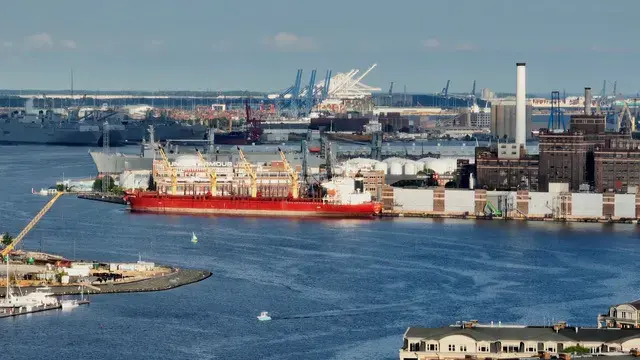
Dead Zones, Decimated Fisheries
Collectively known as nutrient pollution, excess nitrogen and phosphorus are, as Colden puts it, too much of a good thing. In a process called eutrophication, the nutrients fuel rapid growth in algae.
The surplus of algae dies and sinks to the bottom of the Bay. As it decomposes, it starves the surrounding waters of oxygen. This creates hypoxic conditions known as “dead zones” in which very few marine species can survive, including Weaver’s rockfish.
“Are we going to have enough fish to run a successful business?”
—Charter boat fisherman Tom Weaver
“A genuine concern for me is ‘are we going to have enough fish to run a successful business?’” says Weaver. “I can’t do this if there’s not any fish around.”
The Bay is the spawning ground for 70-90% of Atlantic striped bass, but, according to the National Oceanic and Atmospheric Administration, striped bass numbers are “below sustainable levels” in the Chesapeake.
Blue crab populations have also plummeted.
In 2019, the Virginia Institute of Marine Science’s annual winter dredge estimated 600 million blue crabs in the Bay. In 2022, there were 230 million, the lowest recorded number in the 33 years of the survey.
States Keep Failing
The Bay has struggled with pollution for decades, prompting cleanup efforts since as early as the 1960’s.
In December 2010, the Environmental Protection Agency (EPA) developed the Chesapeake Bay Total Maximum Daily Load (TMDL) in conjunction with the six Bay states and D.C.
Its goal was to reduce the maximum amount of nutrient pollution released into the watershed by 2025.
This is the third of its kind for the region. In 1987, Maryland, Pennsylvania, Virginia and D.C. agreed to a 40% reduction of nutrient pollution going into the Bay by the year 2000.
It failed. So in 2000, a new deadline was set for 2010 – this time including Delaware, West Virginia and New York. Again, the states failed to reach their target.
No Bay state is on track to meet their 2025 pollution reduction goals.
Evan Isaacson is a senior attorney and director of policy and research at Chesapeake Legal Alliance. He says the most recent TMDL “was the agreement to end all agreements. This was the framework that was finally going to restore the Chesapeake Bay.”
But in October 2022, both the Chesapeake Bay Foundation and the EPA released evaluations, which said that none of the states are on track to meet their pollution reduction goals by 2025.
“I think most public officials, most advocates, we understand that the 2025 target at this point is not going to be met,” says Isaacson. “We’d have to pull a rabbit out of our hat.”
Run-off from Farms and Sewage
According to Chesapeake Progress, a group that monitors the Bay’s progress towards the 2025 deadline, nearly half the nutrients that entered the Bay in 2021 came from agricultural run-off.
Fertilizers and chicken manure make their way into the watershed during storms or seep into groundwater that ultimately gets into the Chesapeake.
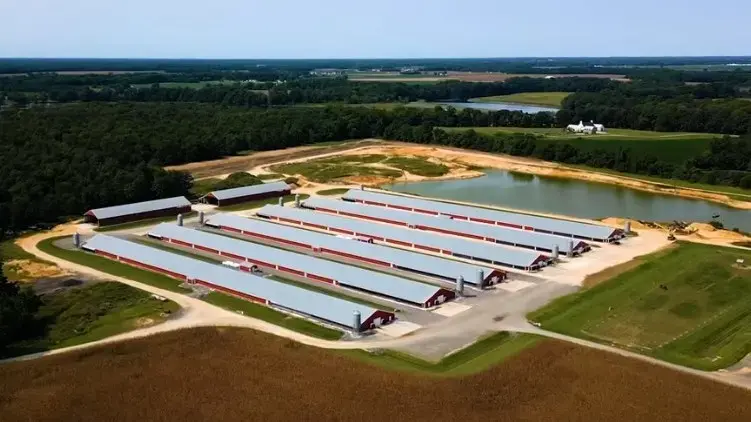
But wastewater treatment has also posed a consistent threat, accounting for 11% of the nitrogen and 15% of the phosphorus that entered the Bay in 2021.
For Maryland, a state that made consistent progress towards its nutrient reduction goals in past years, the recent disasters at the state’s two largest wastewater treatment plants (including a March 2023 explosion at the Back River facility) has jeopardized the state’s chances of hitting its targets.
In April 2021, Alice Volpitta, the Baltimore Harbor Waterkeeper, and her team at Bluewater Baltimore detected high levels of bacteria near the effluent pipes of the Patapsco River and Back River treatment plants, and brought the dysfunction to the attention of the Maryland Department of Environment (MDE).
In March 2022, MDE took temporary control of the Back River plant.
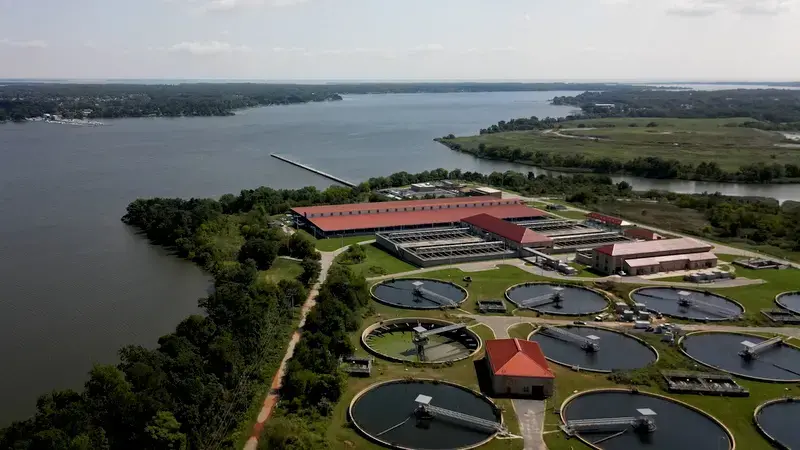
As of today, neither the Patapsco River plant nor the Back River facility is stable. Both are meeting their numeric effluent limitations (meaning that they’re removing the required pollutants from the city’s wastewater).
But state inspections and other reports continue to highlight the urgent need for major overhauls within the treatment facilities.
An MDE inspection on February 27, for instance, revealed significant struggles at the Patapsco Wastewater treatment plant.
Among other issues, inspectors found accumulations of sludge and scum in the clarifiers, fat solids in chlorine chambers and rags and other solids in machinery.
While the city contributes the largest volume of treated wastewater to the Bay – Back River is Maryland’s largest sewage plant, releasing up to 180 million gallons of treated effluent per day – illegal discharges from other jurisdictions play a part as well.
Just yesterday, the Maryland Department of the Environment issued an order to temporarily close a portion of the Choptank River to shellfish harvesting due to a sewage overflow.
An estimated 100,000 gallons of sewage water flowed into the Choptank following heavy rains and a reported blockage at a Cambridge Wastewater Treatment Plant pumping station.
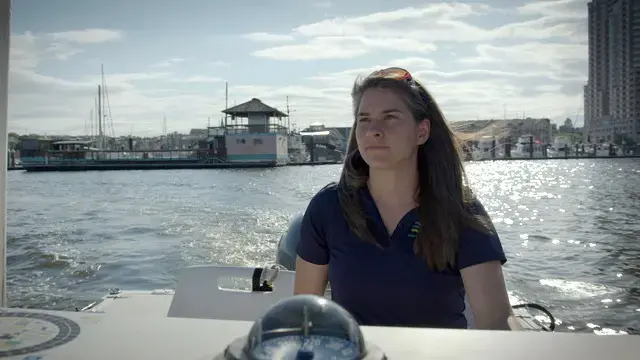
Warming World, Warming Water
To make matters worse, climate change is exacerbating the Bay’s struggles.
Wetter and more frequent storms means increased farm and city runoff; flushing more nutrients and sediment into the bay. Also, water temperature is rising.
According to the Virginia Institute of Marine Sciences, the summertime water temperature in the Bay has risen by 2℉ since the 1980s. Warm water holds less oxygen, which increases the potential size and duration of the bay’s dead zones.
“It’s no surprise to any of us that restoring any water body, especially one as large and complicated as the Chesapeake Bay is tough,” says Adam Ortiz, EPA administrator for the Mid-Atlantic region. “It is unquestionably tougher with the challenges of climate change.”
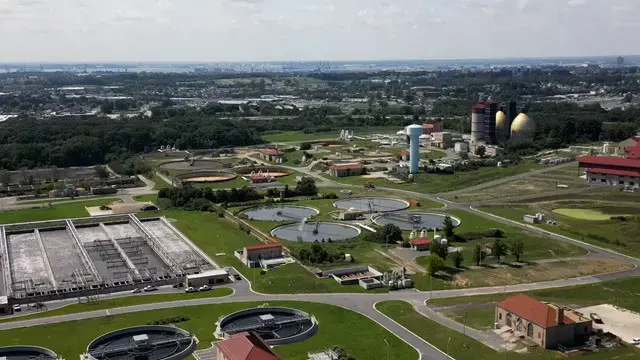
As for Weaver, the busy season has begun and he’s adapting.
He now brings additional lures to target other fish in case he can’t find the prized striped bass. Also, he has increased his traveling range, often “hunting” for the schools of fish.
It’s costly and requires longer hours, but, despite the challenges, Weaver remains optimistic – a contagious optimism that he hopes will continue to drive further conservation of his beloved bay.
“The Chesapeake is definitely savable,” says Weaver. “And 100% worth it.”














